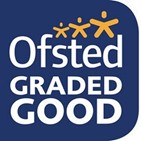Phonics and Early Reading at Bonneygrove
PHONICS and Early Reading
We use the government validated systematic synthetic phonics programme (SSP) called ‘Little Wandle: Letters & Sounds Revised’. The programme is designed to teach children to read from Reception to Year 2, using the skill of decoding and blending sounds together to form words. The Little Wandle: Letters and sounds Revised’ programme provides a full progression through all commonly occurring GPCs (sounds), working from simple to more complex, and taking into account the frequency of their occurrence in the most commonly encountered words.
INTENT
At Bonneygrove Primary School, we are passionate about ensuring all children become confident and enthusiastic readers and writers. We believe that Phonics provides the foundation in supporting children to develop these skills in order for this to become achievable. It is essential that our approach to teaching phonics and reading is accessible to all learners, regardless of background.
We start teaching Phonics in Nursery and follow the Little Wandle Letters and Sounds Revised progression, which ensures children build on their growing knowledge of the alphabetic code, mastering phonics to read and spell as they move through school. It is our aim that all children will be able to tackle any unfamiliar words as they read. We also have a strong focus on language development for our children because we know that speaking and listening are crucial skills for reading and writing in all subjects.
IMPLEMENTATION
Foundations for phonics in Nursery
- We provide a balance of child-led and adult-led experiences for all children that meet the curriculum expectations for ‘Communication and language’ and ‘Literacy’. These include:
- sharing high-quality stories and poems
- learning a range of nursery rhymes and action rhymes
- activities that develop focused listening and attention, including oral blending
- attention to high-quality language.
- We ensure Nursery children are well prepared to begin learning grapheme-phoneme correspondences (GPCs) and blending in Reception.
Daily phonics lessons in Reception and Year 1
- We teach 2 phonics sessions a day. In Reception, we build from 10-minute lessons, with additional daily oral blending games, to the full-length lesson, 30 minutes, as quickly as possible. Each Friday, we review the week’s teaching to help children become fluent readers.
- Children make a strong start in Reception: teaching begins in Week 2 of the Autumn term.
- We follow the Little Wandle Letters and Sounds Revised expectations of progress:
- Children in Reception are taught to read and spell words using Phase 2 and 3 GPCs, and words with adjacent consonants (Phase 4) with fluency and accuracy.
- Children in Year 1 review Phase 3 and 4 and are taught to read and spell words using Phase 5 GPCs with fluency and accuracy.
Daily Keep-up lessons ensure every child learns to read
- Any child who needs additional practice has daily Keep-up support, taught by a fully trained adult. Keep-up lessons match the structure of class teaching, and use the same procedures, resources and mantras, but in smaller steps with more repetition, so that every child secures their learning.
- We timetable daily phonics lessons for any child in Year 2 or 3 who is not fully fluent at reading or has not passed the Phonics Screening Check. These children urgently need to catch up, so the gap between themselves and their peers does not widen. We use the Little Wandle Letters and Sounds Revised assessments to identify the gaps in their phonic knowledge and teach to these using the Keep-up resources – at pace.
- If any child in Year 3 to 6 has gaps in their phonic knowledge when reading or writing, we plan phonics ‘catch-up’ lessons to address specific reading/writing gaps. These short, sharp lessons last 10 minutes and take place at least three times a week.
Teaching reading: Reading practice sessions three times a week
- We teach children to read through reading practice sessions three times a week. These:
- are taught by a fully trained adult to small groups of approximately six children
- use books matched to the children’s secure phonic knowledge using the Little Wandle Letters and Sounds Revised assessments
- are monitored by the class teacher, who rotates and works with each group on a regular basis.
- Each reading practice session has a clear focus, so that the demands of the session do not overload the children’s working memory. The reading practice sessions have been designed to focus on three key reading skills:
- decoding
- prosody: teaching children to read with understanding and expression
- comprehension: teaching children to understand the text.
- In Reception these sessions start by Spring for those children that are ready. Children who are not yet decoding have daily additional blending practice in small groups, so that they quickly learn to blend and can begin to read books.
- In Year 2 and 3, we continue to teach reading in this way for any children who still need to practise reading with decodable books.
Home reading
- The decodable reading practice book is taken home to ensure success is shared with the family. These are matched to the Phonics phases and not colour banded.
- Reading for pleasure books also go home for parents to share and read to children.
- In Reception, children are given 100 high frequency words and tricky words to match the Little Wandle scheme to practise regularly at home.
- In Year 1, children are given 200 high frequency words and tricky words to match the Little Wandle scheme to practise regularly at home.
Additional reading support for vulnerable children
- Children are identified by Autumn 2 and regularly monitored by Reading Leader and SENCo
- Children in Reception and Year 1 who are receiving additional phonics Keep-up sessions read their reading practice book to an adult daily.
Ensuring consistency and pace of progress
Every member of teaching staff in our school has been trained using the Little Wandle phonics programme to teach reading. This is to ensure we have the same expectations of progress. We all use the same language, routines and resources to teach children to read so that we lower children’s cognitive load.
Weekly content grids map each element of new learning to each day, week and term for the duration of the programme. Lesson templates, prompt cards and how to videos ensure teachers all have a consistent approach and structure for each lesson.
The Reading Leader and Senior Leadership Team will use the audit and prompt cards to regularly monitor and observe teaching; they use the summative data to identify children who need additional support and gaps in learning.
IMPACT
Assessment
Assessment is used to monitor progress and to identify any child needing additional support as soon as they need it.
- Assessment for learning is used:
- daily within class to identify children needing Keep-up support
- weekly in the Review lesson to assess gaps, address these immediately and secure fluency of GPCs, words and spellings.
- Summative Assessment is used:
- every six weeks to assess progress, to identify gaps in learning that need to be addressed, to identify any children needing additional support and to plan the Keep-up support that they need.
- by SLT and scrutinised through the Little Wandle Letters and Sounds Revised assessment tracker, to narrow attainment gaps between different groups of children and so that any additional support for teachers can be put into place.
Statutory assessment
- Children in Year One sit the Phonics Screening Check. Any child not passing the check re-sits it in Year Two (generally in June).
Ongoing assessment for catch-up
- Children in Year 2 to 6 are assessed through their teacher’s ongoing formative assessment as well as through the half-termly Little Wandle Letters and Sounds Revised summative assessments.
Additional Information
Because we believe teaching every child to read is so important, we have a Phonics Leader- Mrs Vanessa Cain, who drives the early reading programme in our school. This person is highly skilled at teaching phonics and reading, and they monitor and support our reading team, so everyone teaches with fidelity to the Little Wandle Letters and Sounds Revised programme.
Follow these links to support your child at home:
- Support for Phonics https://www.littlewandlelettersandsounds.org.uk/resources/for-parents/
- How we teach Phonics https://www.littlewandlelettersandsounds.org.uk/resources/for-parents/
- Books coming home https://www.littlewandlelettersandsounds.org.uk/resources/for-parents/
An example of the Phase Two graphemes the children will learn in Reception.

















